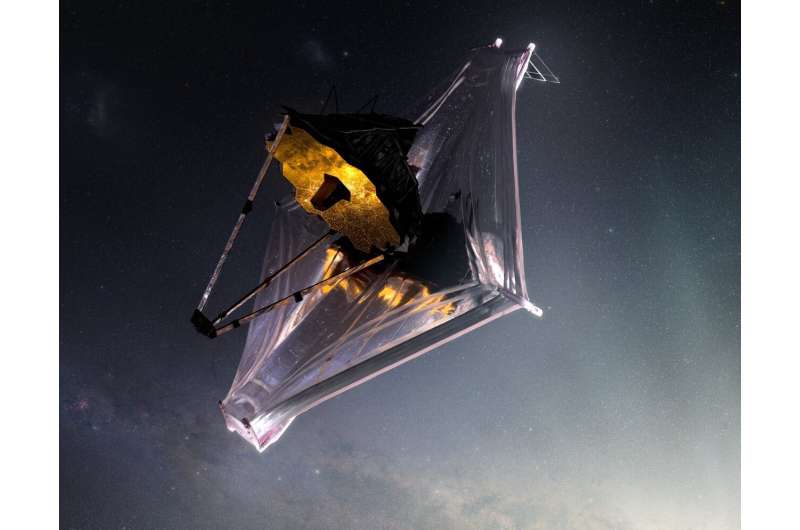Second and third layers of Webb telescope sunshield fully tightened

The Webb team has completed tensioning for the first three layers of the observatory's kite-shaped sunshield, 47 feet across and 70 feet long.
The first layer—pulled fully taut into its final configuration—was completed mid-afternoon.
The team began the second layer at 4:09 pm EST today, and the process took 74 minutes. The third layer began at 5:48 pm EST, and the process took 71 minutes. In all, the tensioning process from the first steps this morning until the third layer achieved tension took just over five and a half hours.
These three layers are the ones closest to the Sun. Tensioning of the final two layers is planned for tomorrow.
"The membrane tensioning phase of sunshield deployment is especially challenging because there are complex interactions between the structures, the tensioning mechanisms, the cables and the membranes," said James Cooper, NASA's Webb sunshield manager, based at Goddard Space Flight Center. "This was the hardest part to test on the ground, so it feels awesome to have everything go so well today. The Northrop and NASA team is doing great work, and we look forward to tensioning the remaining layers."
Once fully deployed, the sunshield will protect the telescope from the Sun's radiation. It will reach a maximum of approximately 383K, approximately 230 degrees F, while keeping the instruments cold at a minimum of approximately 36K or around -394 degrees F.
The James Webb Space Telescope is the world's largest, most powerful, and most complex space science telescope ever built. Webb will solve mysteries in our solar system, look beyond to distant worlds around other stars, and probe the mysterious structures and origins of our universe and our place in it. Webb is an international program led by NASA with its partners, ESA (European Space Agency) and the Canadian Space Agency.Time saving tooling rods used on NASA's Webb Telescope sunshield
Provided by NASA's Goddard Space Flight Center
No comments:
Post a Comment